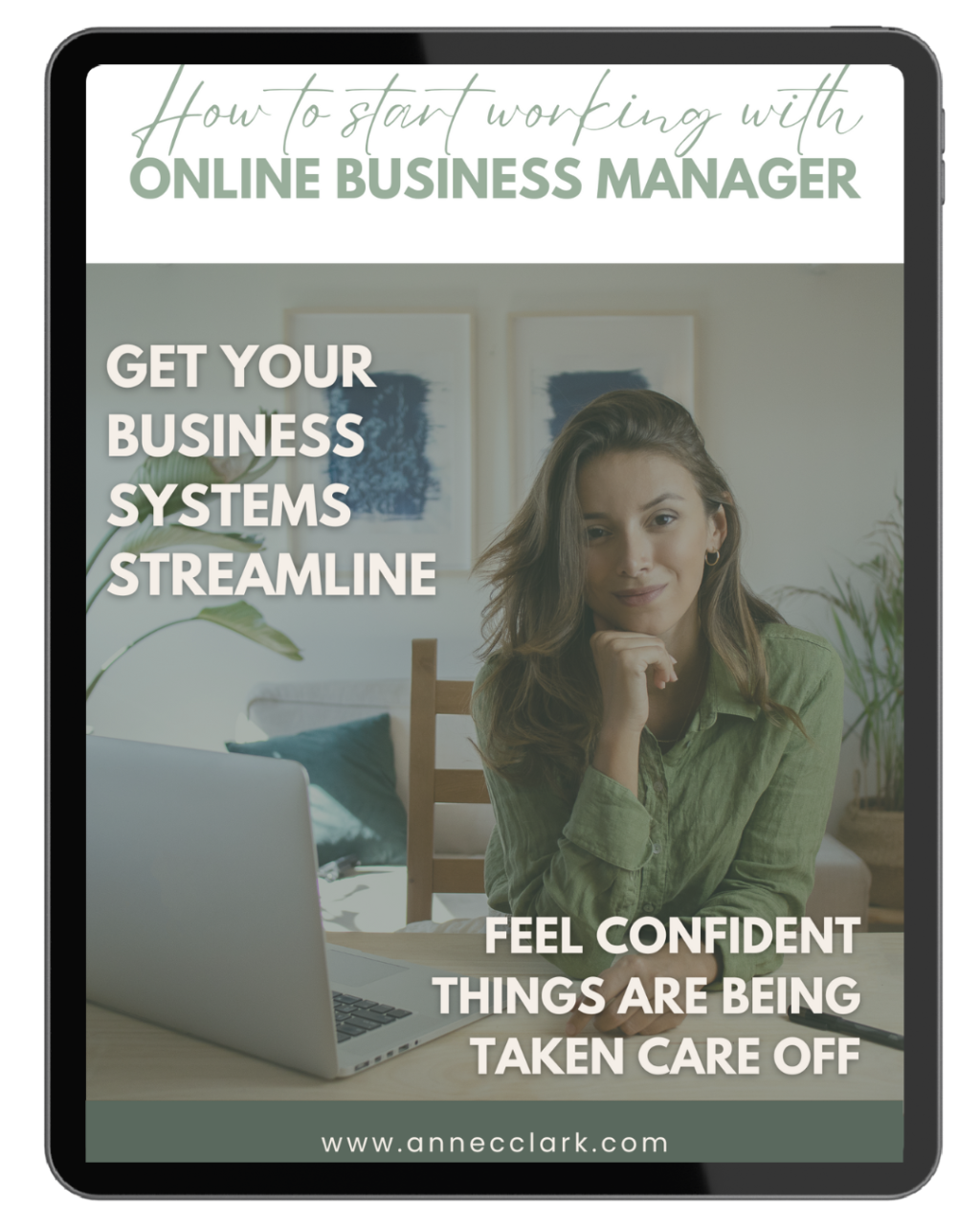
by Anne Clark | Dec 26, 2024 | Business
The holiday season is the perfect time to unwind, reflect, and get inspired for the year ahead. Whether you’re lounging on a beach, curled up by a fireplace, or stealing a quiet moment with a cup of tea, the right book can offer transformative insights to set you up for success. Here’s a curated list of 30 books to fuel your mindset, strategy, and creativity as you prepare for an epic business year in 2025.
Mindset & Personal Growth
- Atomic Habits by James Clear
Discover how small changes can lead to remarkable results in your personal and professional life.
- Daring Greatly by Brené Brown
Learn the power of vulnerability and how it can transform your relationships and leadership style.
- The Four Agreements by Don Miguel Ruiz
These timeless principles will help you cultivate inner peace and clarity in decision-making.
- Think Like a Monk by Jay Shetty
Tap into ancient wisdom to enhance your focus, gratitude, and purpose.
- You Are a Badass at Making Money by Jen Sincero
Shift your money mindset and unlock abundance with this no-nonsense guide.
- The Gifts of Imperfection by Brené Brown
Embrace authenticity and let go of perfectionism to lead with confidence.
- The Artist’s Way by Julia Cameron
Reignite your creativity with this iconic guide to overcoming blocks and nurturing your artistic spirit.
Leadership & Business Strategy
- Leaders Eat Last by Simon Sinek
Explore how great leaders create trust and foster collaboration within teams.
- Good to Great by Jim Collins
Understand what sets successful companies apart and how you can apply these principles to your own ventures.
- Drive by Daniel H. Pink
Learn what truly motivates people and how you can inspire your team to achieve their best.
- The Lean Startup by Eric Ries
A must-read for entrepreneurs looking to build sustainable businesses through innovation and agility.
- Radical Candor by Kim Scott
Master the art of giving and receiving feedback to create stronger, more effective teams.
- Traction by Gino Wickman
Learn how to run your business with a clear vision and proven systems for growth.
- No Rules Rules by Reed Hastings and Erin Meyer
Get a behind-the-scenes look at Netflix’s groundbreaking corporate culture and innovation strategies.
Marketing & Branding
- Building a StoryBrand by Donald Miller
Transform your messaging to captivate your audience and grow your business.
- This Is Marketing by Seth Godin
Gain insights into creating meaningful connections with your customers.
- Influence by Robert B. Cialdini
Understand the psychology of persuasion and how it can elevate your marketing strategies.
- The 1-Page Marketing Plan by Allan Dib
Simplify your marketing strategy and create actionable steps for success.
- Content Inc. by Joe Pulizzi
Learn how to build a powerful business by focusing on audience-first content marketing.
- Hooked by Nir Eyal
Dive into the science of creating products and services that keep customers coming back.
Productivity & Organisation
- Deep Work by Cal Newport
Master the skill of focused work in an increasingly distracted world.
- Essentialism by Greg McKeown
Prioritise what truly matters by eliminating the non-essential.
- Getting Things Done by David Allen
Learn actionable strategies to organise your tasks and maximise productivity.
- The 5 AM Club by Robin Sharma
Discover the habits of early risers and how to structure your day for success.
- Make Time by Jake Knapp and John Zeratsky
Find practical tips for carving out time for what truly matters.
Finance & Scaling Your Business
- Profit First by Mike Michalowicz
A game-changing approach to managing your business finances for sustainable growth.
- The E-Myth Revisited by Michael E. Gerber
Discover why many small businesses fail and how you can create systems for long-term success.
- Principles by Ray Dalio
Explore the principles that shaped one of the world’s most successful investors and leaders.
- Blue Ocean Strategy by W. Chan Kim & Renée Mauborgne
Learn how to create uncontested market spaces and make your competition irrelevant.
- Rich Dad Poor Dad by Robert T. Kiyosaki
Get timeless financial insights to improve your money management skills and entrepreneurial mindset.
How to Make the Most of This Reading List
- Set Your Intentions: Choose books that align with your current goals and challenges.
- Take Notes: Jot down key takeaways and actionable insights as you read.
- Create a Plan: Incorporate what you’ve learned into your 2025 business strategy.
- Share the Journey: Discuss your favourite reads with your team, peers, or business coach to deepen your understanding and spark new ideas.
📚Want a copy of this list, sign up here and I’ll send you a copy direct to your inbox. 📚
📚Want a copy of this list, sign up here and I’ll send you a copy direct to your inbox. 📚

by Anne Clark | Dec 3, 2024 | Business, Digital Marketing
As someone who juggles multiple projects and values efficiency, finding tools that make life easier is non-negotiable. Enter Riverside.fm, my go-to platform for recording and editing podcasts, webinars, and video content. From the moment I started using it, I knew this wasn’t just another recording tool—it’s a game-changer.
Top Features That Stand Out
- Crystal Clear Recording Quality
Riverside captures audio and video locally on each participant’s device before uploading it, meaning no more worrying about glitches or poor internet connections affecting the final product. The result? High-quality, professional-grade recordings every single time.
- User-Friendly Interface
The platform’s design is intuitive, making it perfect for tech-savvy pros and beginners alike. You can quickly set up a recording session, invite guests, and hit record without any fuss.
- Multi-Track Recording
Each participant’s audio and video are recorded on separate tracks. This is a lifesaver during editing because it allows me to fine-tune each person’s audio or video independently. No more struggling with overlapping dialogue or background noise that ruins the entire track.
- Magic Editor: The Ultimate Time Saver
Here’s where Riverside truly shines for me. The Magic Editor is like having an editing wizard on standby. With just a few clicks, you can trim unwanted segments, polish transitions, and create a professional-looking output—no advanced editing skills required. It saves me hours of work and delivers a final product that’s ready to upload.
- Transcriptions Made Easy
For anyone repurposing content into blogs or social media posts, Riverside’s automatic transcription feature is a blessing. It’s accurate, easy to export, and saves tons of time.
Why I Love It
Riverside has made my content creation process faster, easier, and more enjoyable. The days of dreading post-production editing are over. With its combination of powerful features and seamless functionality, I can focus on creating great content without being bogged down by the technical side of things.
Perfect for Any Creator
Whether you’re a seasoned podcaster, a business owner recording webinars, or someone just starting their content journey, Riverside is the ultimate tool to elevate your workflow. It’s more than a platform—it’s a partner in making your creative projects a success.
If you’re on the fence about trying Riverside, jump in. It’s worth every cent for the time, frustration, and effort it saves. It’s not just a recording tool—it’s a complete content creation solution that keeps me coming back for more. Learn more about Riverside here.

by Anne Clark | Nov 29, 2024 | Business, Kajabi
Online entrepreneurs are continuously seeking for ways to simplify their companies and provide outstanding value to their clients in the fast-paced digital environment of today. Now enter Kajabi, the best all-in-one platform meant to streamline the creation, marketing, and sales of your web products. Here are 10 reasons Kajabi is the game-changer you need if you are an entrepreneur trying to expand your company without balancing several tools.
One all-in-one solution
Kajabi creates courses, manages your email marketing, builds your sales funnels, and replaces the need for separate tools to run your website. It saves time, money, and the trouble of juggling several subscriptions by deftly combining all these capabilities into one simple platform.
Simple Guide Creation Tools
Creating and launching an online course has never been easier using Kajabi’s drag-and-drop course builder. Without technical knowledge, you can arrange your material, include videos, design quizzes, and post downloadable materials.
Expert Internet Design
Kajabi lets you design a fantastic, branded website without using any coding. Select from lovely designs and personalise them to fit your brand, so making sure your company is unique online.
Strong email marketing tools built-in in Built-In Email Marketing Kajabi let you segment your audience, create automated email campaigns, and track performance data. You now have all of this right here in one location instead of a third-party email service.
Strong Sales Funnels
Built-in pipelines from Kajabi enable you to design high-converting sales funnels guiding your audience from lead generation to purchase. Kajabi makes it easy to set up and monitor the success of your funnel regardless of webinars, opt-ins, or new product introductions.
Flawless integration of payments
Kajabi lets you easily accept payments worldwide by connecting with well-known payment providers including Stripe and PayPal. You can also track income straight from the platform, handle subscriptions, and create payment plans.
Member Associations
Want a vibrant community built? Kajabi lets you design interactive, private member areas where you might interact with your audience, provide special materials, and foster loyalty.
Total Analytics
The analytics dashboard of Kajabi provides real-time understanding of the state of your company. Track sales, email open rates, client interaction, and more to base decisions on data that expand your company.
Hosting Unlimited
Give up the headache of handling third-party hosting systems or storage restrictions. Kajabi guarantees your content is always available to your audience by providing unlimited video hosting and bandwidth.
Constant Updates and Assistance
Constantly innovating, Kajabi adds tools and new features to keep ahead in the digital scene. Besides, their first-rate customer service makes you never alone when you need assistance.
Why You Need a Kajabi Consultant
Although Kajabi is a great platform, setting it up to fully utilise its possibilities can be daunting, particularly if you are new to online business. This is where a Kajabi specialist is most useful. From designing a professional website to building flawless sales funnels and automations, a professional can help you maximise Kajabi and accelerate your success.
All set to propel your company towards its next level? I’m here to help if you’re ready to use Kajabi’s power but don’t know where to start. Being a Kajabi specialist will help you to set up your platform, personalise it to fit your requirements, and guarantee it runs easily for your company. Let’s design a system that provides outcomes and supports your development. Get in touch right now to begin using Kajabi to help your company flourish.

by Anne Clark | Nov 25, 2024 | Business
Taking some time off over the holidays to relax, rejuvenate, and plan for the new year. Here is a list of 20 must-read business books perfect for entrepreneurs, business leaders, and professionals seeking to be inspired, educated and upskill to tackle 2025 with confidence. If you or someone you care about is looking for holiday gift ideas, now is the time to share this list and start organising your reading list.
Leadership and Personal Development
- Atomic Habits by James Clear
A game-changer for those seeking to build better habits and break bad ones. Learn actionable strategies to improve daily routines and achieve your goals in 2025.
- Dare to Lead by Brené Brown
Perfect for leaders who want to lead with vulnerability, courage, and authenticity.
- The 7 Habits of Highly Effective People by Stephen R. Covey
A timeless classic that provides a framework for personal and professional effectiveness.
- Drive: The Surprising Truth About What Motivates Us by Daniel H. Pink
Understand what truly motivates people and how to harness that for personal and business success.
- Grit by Angela Duckworth
Discover how perseverance and passion can help you achieve extraordinary things in 2025.
Marketing and Sales
- Building a StoryBrand by Donald Miller
Learn how to clarify your message to engage customers and grow your business.
- Influence: The Psychology of Persuasion by Robert B. Cialdini
Explore the science behind why people say “yes” and how to use that knowledge ethically.
- Sell Like Crazy by Sabri Suby
An Australian-based guide packed with practical, proven strategies to skyrocket your sales.
- Content Inc. by Joe Pulizzi
A guide for content creators and entrepreneurs looking to grow their audience and turn passion into profit.
- The Lean Startup by Eric Ries
For anyone planning to launch a business or pivot in 2025, this book outlines how to do it effectively with minimal risk.
Business Strategy
- Good to Great by Jim Collins
Discover what separates good companies from truly great ones and apply these lessons to your business.
- Blue Ocean Strategy by W. Chan Kim and Renée Mauborgne
Learn how to create uncontested market space and make the competition irrelevant.
- Measure What Matters by John Doerr
Dive into the power of Objectives and Key Results (OKRs) to drive focus and accountability.
- The Hard Thing About Hard Things by Ben Horowitz
Honest insights on building and managing a business when there are no easy answers.
- Zero to One by Peter Thiel
For innovators and startup founders, this book challenges you to think differently and build something truly unique.
Mindset and Productivity
- Deep Work by Cal Newport
Learn how to focus without distraction and achieve peak productivity.
- Essentialism: The Disciplined Pursuit of Less by Greg McKeown
Discover the art of focusing on what truly matters and eliminating the non-essential.
- Think Again by Adam Grant
A guide to embracing the power of rethinking and unlearning in a rapidly changing world.
- Mindset: The New Psychology of Success by Carol S. Dweck
Uncover the power of a growth mindset and how it can transform your approach to challenges in 2025.
- The One Thing by Gary Keller
Simplify your focus to achieve extraordinary results in your personal and professional life.
The holiday season is not just about relaxation—it’s a time to reflect and prepare for the exciting opportunities ahead. These books cover a wide range of topics, from leadership to marketing and mindset, ensuring you’re equipped with fresh perspectives and actionable strategies for 2025.
Which of these will you start with? Share your favourites in the comments below or let us know if there’s a must-read book that we missed!

by Anne Clark | Nov 22, 2024 | Business, Online Business Manager
An online business manager serves what purpose?
Many business owners find themselves juggling strategy, operations, marketing, and team management. Although business owners are quite good at what they do, the daily running of their company can sometimes become taxing. Here an online business manager (OBM) comes in handy.
An online business manager is a professional with an eye towards the operational management of an online company. Their main responsibility is to supervise the behind-the-scenes operations, keeping a company operational, freeing business owners to concentrate on expansion and their areas of competence.
Important Roles of an Online Business Manager
Project Control
OBMs guarantee timely and within budget delivery of projects. To keep everything on schedule, they draft thorough project plans, assign work to the staff, and track development. Launching a new product, organising a webinar, or running a marketing campaign—OBMs are the glue keeping the project together.
Teamwork Management
Running a remote team can be difficult. Hiring, integrating, and supervising virtual team members falls to OBMs. They guarantee that everyone understands their roles, deadlines, and expectations, so promoting a harmonic and effective workplace.
Development and Optimisation of Systems
An OBM’s job depends critically on system setup and streamlining. From streamlining processes to combining tools, including email marketing systems, CRM systems, and project management tools, OBMs help companies become more effective.
Oversight of Operations
Daily operations of the company are supervised by OBMs, who make sure everything runs like a well-maintaining machine. This covers process management, operational bottleneck clearing, and best practice applications to raise general output.
Figures and Documentation
Making decisions in a company requires a knowledge of its numbers. Key performance indicators (KPIs) are tracked by OBMs against corporate goals, who also offer actionable insights to enable owners to make wise decisions.
Strategic Back-Up
Acting as a second-in-command, OBMs assist companies in developing and reaching strategic objectives. They enable long-term planning, task prioritising, and matching team efforts with the corporate vision.
Why would one want an online business manager?
Freedom of Time
Business owners can reclaim their time to concentrate on big-picture goals, creativity, and personal development by assigning operational duties to an OBM.
Knowledge
OBMs offer a lot of knowledge in running online companies. Their degree of knowledge improves efficiency and development since they grasp digital tools, team dynamics, and strategies to simplify processes.
Scalabilities
An OBM can enable proper scale if your company is expanding. From handling more responsibility to creating the required infrastructure, they make sure that expansion doesn’t compromise quality or customer satisfaction.
Lowered Burnout
The continual pressures of their job sometimes overwhelm business owners. By assuming responsibility for daily operations, OBMs help entrepreneurs to work smarter rather than harder and reduce their stress.
Who Needs a Manager of Online Business?
An OBM is perfect for
- People running several revenue sources in business.
- Entrepreneurs ready for expansion but lacking the operational support.
- Leaders running projects and teams needing a reliable right-hand person.
- Visionaries and creatives who flourish when free to concentrate on their zone of genius.
In essence,
Helping companies run effectively and develop sustainably depends mostly on an online business manager. They are the operational backbone, enabling company owners to confidently and clearly enter their leadership role. Hiring an OBM could be the secret to releasing the next level of your success if the demands of your online business are stranding you.

by Anne Clark | Nov 4, 2024 | Business
This season of The Block 2024 has served up plenty of drama along with its usual construction challenges. While the show often highlights teamwork and resilience, it has also underscored some behaviours that business owners should avoid. The season has featured moments like Kylie’s aggressive comments, Mimi’s reluctance to take responsibility, and Maddy and Charlotte’s impressive kindness in the face of unkindness—each offering a valuable lesson in professionalism, accountability, and resilience.
Here’s what business owners can take away from these dynamics on The Block this season.
1. The Importance of Professionalism
Kylie’s frequent, aggressive comments throughout the season have added unnecessary tension to an already high-pressure environment. Her behaviour is a reminder of how essential professionalism is, especially when stakes are high. In business, maintaining a respectful, constructive tone even when frustrated fosters a positive work environment. Confrontational behaviour not only damages individual reputations but can also erode team trust and morale.
Staying professional, even under stress, helps set the tone for a respectful and productive workplace, creating an example that reflects positively on the entire team.
2. Accountability Isn’t Optional
Mimi’s comment, “I don’t want to talk about it. What I do when I’m drunk is none of my business,” was a revealing moment that highlighted a lack of accountability. In business, avoiding responsibility or blaming external factors doesn’t just harm reputations—it also disrupts trust and collaboration. Accountability means owning actions and recognising the impact they have on others. It’s especially important in challenging moments, as it builds a foundation of trust and respect.
Reliable leaders and teams own their mistakes and demonstrate a willingness to learn from them. Accountability is essential for a culture of growth and improvement.
3. The Strength of Kindness and Resilience
Despite Kylie’s harsh comments, Maddy and Charlotte continued to treat her with kindness and respect. Their resilience and grace in the face of difficult behaviour set a powerful example. In any business, showing kindness—even to challenging people—is an asset. This approach can help de-escalate tension, create a more supportive work environment, and demonstrate an unwavering commitment to integrity.
Kindness isn’t about accepting poor behaviour but about choosing to respond with compassion and respect. This approach builds resilience and fosters healthier working relationships, even in the face of adversity.
4. Effective Communication is Critical
The season’s conflicts have underscored the importance of clear, respectful communication. Kylie’s harsh comments and Mimi’s reluctance to engage in accountability have shown how poor communication can lead to misunderstandings and escalate issues. In business, clear and transparent communication is key to avoiding unnecessary drama and ensuring everyone is aligned on goals.
Good communication practices, like avoiding unnecessary comments and staying solution-focused, keep projects on track and foster a positive team atmosphere.
5. Reputation Over Short-Term Wins
Aggressive and defensive attitudes might create a memorable moment on TV, but they rarely lead to long-term success. In business, reputation is everything. Short-term gains achieved through confrontation or blame-shifting may win attention, but they also risk undermining trust. A tarnished reputation can have lasting repercussions, affecting client relationships and team morale.
Prioritising integrity and relationship-building over the “win at all costs” mentality creates a positive, sustainable impact, strengthening connections with clients, customers, and partners.
6. Resilience is Key to Overcoming Conflict
Maddy and Charlotte’s resilience in the face of unkind behaviour demonstrated how important it is to stay focused and unflustered by criticism or negativity. In business, feedback and even criticism are a constant part of the process. Handling it with grace and resilience not only showcases maturity but helps maintain a constructive focus on goals.
Resilience allows leaders and teams to move forward without getting bogged down by negativity or challenges. It’s a skill that helps businesses stay on course, no matter the obstacles.
Wrapping Up
The Block 2024 has been a season full of teachable moments, reminding business owners of the power of professionalism, accountability, and kindness. While aggressive or dismissive attitudes might add to the drama, they ultimately serve as reminders of what to avoid. Focusing on respect, effective communication, and integrity helps build a business that thrives on positive relationships and long-term success.
In the end, a successful business is about fostering trust, building a positive reputation, and leading by example. Learning from The Block’s ups and downs, business owners can create a legacy that lasts by prioritising professionalism, collaboration, and resilience. These qualities not only create a strong foundation but also ensure a reputation that stands the test of time.














